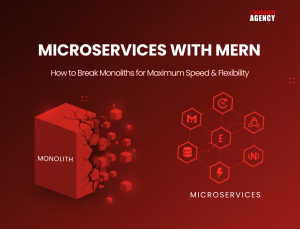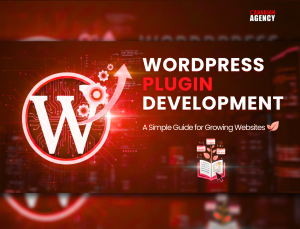If you have spent any time in the WordPress ecosystem, you know it as the world’s most popular content management system. With more than 43 percent of the web powered by WordPress, it is not just a platform, it is the backbone of the modern internet. Yet despite its dominance, a growing number of developers are looking beyond traditional WordPress setups. They are embracing something called Headless WordPress, and while the name might sound a little unsettling at first, this new approach is transforming how we build, manage, and deliver content.
So, what exactly does “headless” mean in this context, and why are so many developers choosing to adopt it? Let’s dive in and explore this new chapter in WordPress’s evolution.
The Evolution of WordPress from a Simple Blog Tool to a Powerful Web Platform
When WordPress first appeared in 2003, it was a lightweight blogging tool that gave everyday people the ability to publish online. Over the years, it evolved into a full-fledged CMS that now supports complex websites, e-commerce stores, and enterprise-level applications. This growth is what made WordPress the powerhouse it is today.
But with that growth came complexity. Traditional WordPress binds together two parts: the back end (where content is created and stored) and the front end (where that content is displayed to users). For many use cases, this works perfectly fine. Yet as businesses demand faster websites, more flexibility, and delivery of content across multiple platforms beyond just a website the limitations of this traditional setup have started to show. That is where Headless WordPress enters the picture.
What Headless WordPress Really Means in Simple Terms
Headless WordPress is not about chopping anything off, it is about separating responsibilities. In a traditional WordPress setup, you write content in the admin dashboard, and WordPress also controls how that content appears on the website using themes and templates. In a headless setup, you still use WordPress as the content management tool, but instead of letting WordPress handle the presentation, the content is delivered through APIs, such as the REST API or GraphQL.
This means that developers can build completely custom front ends using modern frameworks like React, Next.js, Vue, or Angular. WordPress remains the powerful “brain” that manages your posts, pages, and media, while the “face” of the website can be anything you want it to be. The result is flexibility and performance that go far beyond what traditional WordPress themes can provide.
Understanding How Headless WordPress Architecture Functions in Practice
At its core, headless architecture is about decoupling. Imagine that you have written a blog post in your WordPress dashboard. Instead of WordPress directly rendering that post into a theme on your website, the content is exposed through an API. Then, your front-end application whether it is a React-based website, a mobile app, or even a smart TV interface fetches that content and displays it in its own unique way.
This allows the same piece of content to appear in multiple places simultaneously. A single WordPress backend could power your main website, your company’s mobile app, and even your smartwatch notifications. By separating content management from presentation, businesses can deliver consistent information across all channels without duplicating work.
Why Developers Around the World Are Making the Switch to Headless WordPress
The rise of headless architecture is not just hype it solves real problems that developers have faced for years. One of the most significant reasons for switching is performance. Traditional WordPress websites can become sluggish due to heavy plugins, large themes, and server limitations. Headless WordPress allows developers to use modern frameworks and static site generators that dramatically speed up page loads, giving users faster experiences and boosting SEO rankings.
Another major factor is design freedom. Instead of being locked into what a WordPress theme allows, developers can create completely custom front ends. This creative flexibility empowers designers to craft unique user experiences that match brand identities perfectly.
Headless WordPress also shines when it comes to omnichannel delivery. In a world where content must appear on websites, apps, digital displays, and even IoT devices, headless systems provide a way to manage everything from one source of truth. Businesses no longer need to reinvent their content strategy for each platform; they simply distribute the same content through APIs.
Security is another compelling reason for the switch. By separating the back end from the front end, headless setups minimize exposure to common WordPress vulnerabilities, making it harder for hackers to exploit weak points in themes or plugins. Finally, scalability is easier with headless WordPress. A sudden surge in traffic, such as during a product launch or viral event, can be handled more effectively with modern architectures that rely on CDNs and lightweight front ends.
Exploring the Real-World Use Cases Where Headless WordPress Truly Excels
While headless WordPress sounds great in theory, its value becomes crystal clear when you look at real world applications. E-commerce websites, for example, rely heavily on speed because every extra second of load time can hurt conversion rates. A headless setup ensures lightning-fast shopping experiences.
Media platforms and online magazines, which often have massive amounts of content and traffic, also benefit from the performance and scalability that headless offers. Enterprises that operate across multiple regions can use one WordPress backend to deliver content in different languages and formats across the globe. Even mobile-first businesses and startups find headless WordPress appealing because it allows them to use one CMS to power both their websites and mobile apps seamlessly.
The Wide Ranging Benefits That Come with Choosing Headless WordPress
When you step back and look at the bigger picture, the benefits of going headless are clear. Websites load faster and perform better, which keeps users engaged and improves search rankings. Designers and developers have total creative freedom instead of being limited by rigid themes. Content can be delivered anywhere on a website, an app, a wearable device, or something that has not even been invented yet.
Security improves because the separation of back end and front end reduces vulnerabilities. Developers enjoy working with modern frameworks that make their jobs more efficient and enjoyable. And businesses that want to future-proof their digital presence find that headless WordPress gives them the flexibility to adapt to whatever comes next in the ever-changing tech landscape.
The Challenges and Limitations That Developers Must Consider Before Going Headless
Of course, headless WordPress is not a magic bullet, and it comes with its own set of challenges. For one, it is more complex to set up than traditional WordPress. Instead of installing a theme and a few plugins, developers must build and maintain a custom front end, which requires advanced knowledge of JavaScript frameworks and APIs.
This complexity also translates into cost. Building and maintaining a headless website is often more expensive because it demands specialized skills and additional development time. For non-technical users, the experience can feel frustrating, as many familiar WordPress plugins rely on the traditional front end and may not function as expected in a headless setup.
Ultimately, headless WordPress offers incredible potential, but it is not always the right choice for small websites, hobby blogs, or businesses without the resources to support ongoing technical development.
Deciding Whether Headless WordPress Is the Right Choice for Your Project
The big question many people ask is: should I switch to headless WordPress? The answer depends on your goals. If you need blazing-fast performance, want to deliver content across multiple platforms, and have a skilled development team ready to build custom solutions, headless WordPress could be a game changer. It is particularly ideal for enterprises, media outlets, and businesses that are scaling rapidly.
On the other hand, if you are running a small blog, a local business website, or a simple portfolio, traditional WordPress is still a reliable, cost-effective option. The key is to evaluate your needs honestly and choose the solution that aligns with your resources and long-term strategy.
Looking Ahead: How Headless WordPress Could Shape the Future of Websites, Applications, and Digital Experiences
The momentum behind headless WordPress is undeniable, and the future looks promising for both developers and businesses. Modern frameworks such as Next.js, Nuxt, and Remix are lowering the barriers to entry, making it easier than ever to build sleek, high-performing headless websites. At the same time, AI-powered tools are beginning to assist with automating content delivery, personalization, and optimization, which means the role of WordPress as a headless CMS could expand far beyond what we imagine today.
The rise of the JAMstack movement is also accelerating this trend. By focusing on speed, security, and scalability, JAMstack architecture naturally pairs well with headless CMS platforms, with WordPress leading the way due to its widespread adoption and community support. As more organizations seek to deliver consistent experiences across websites, apps, wearables, and even voice assistants, headless WordPress is positioned to be a central player in this shift.
It is unlikely that traditional WordPress will disappear any time soon. Instead, what we are seeing is the emergence of a hybrid model, where WordPress can be used either as a traditional CMS, a headless CMS, or even both at the same time depending on project requirements. This flexibility is part of what makes WordPress so enduring, and it ensures that as technology continues to evolve, WordPress will evolve with it.
Conclusion: Why Headless WordPress Represents More Than Just a Trend
Headless WordPress may sound like a buzzword, but it represents a fundamental shift in how we think about content management and delivery. By separating the back end from the front end, it allows developers to build faster, more flexible, and more secure digital experiences. Businesses are drawn to it because it enables content to flow seamlessly across multiple platforms, and users love it because it results in websites and applications that feel modern and responsive.
The switch to headless is not for everyone, but for those who are ready to embrace it, the rewards can be substantial. Developers gain freedom, businesses gain scalability, and users gain better digital experiences.
Perhaps the best way to think about it is this: if traditional WordPress is a reliable family car that can take you from point A to point B, headless WordPress is a custom-built sports car sleek, powerful, and designed for those who want to go further, faster, and with more style.
The decision to switch ultimately depends on your goals, resources, and vision for the future. But one thing is certain: headless WordPress is not just a passing trend. It is a glimpse into the future of web development, where flexibility, speed, and adaptability rule. And as more developers and businesses make the switch, it is clear that headless WordPress is not only here to stay, it is here to redefine what is possible with the world’s most popular CMS.




